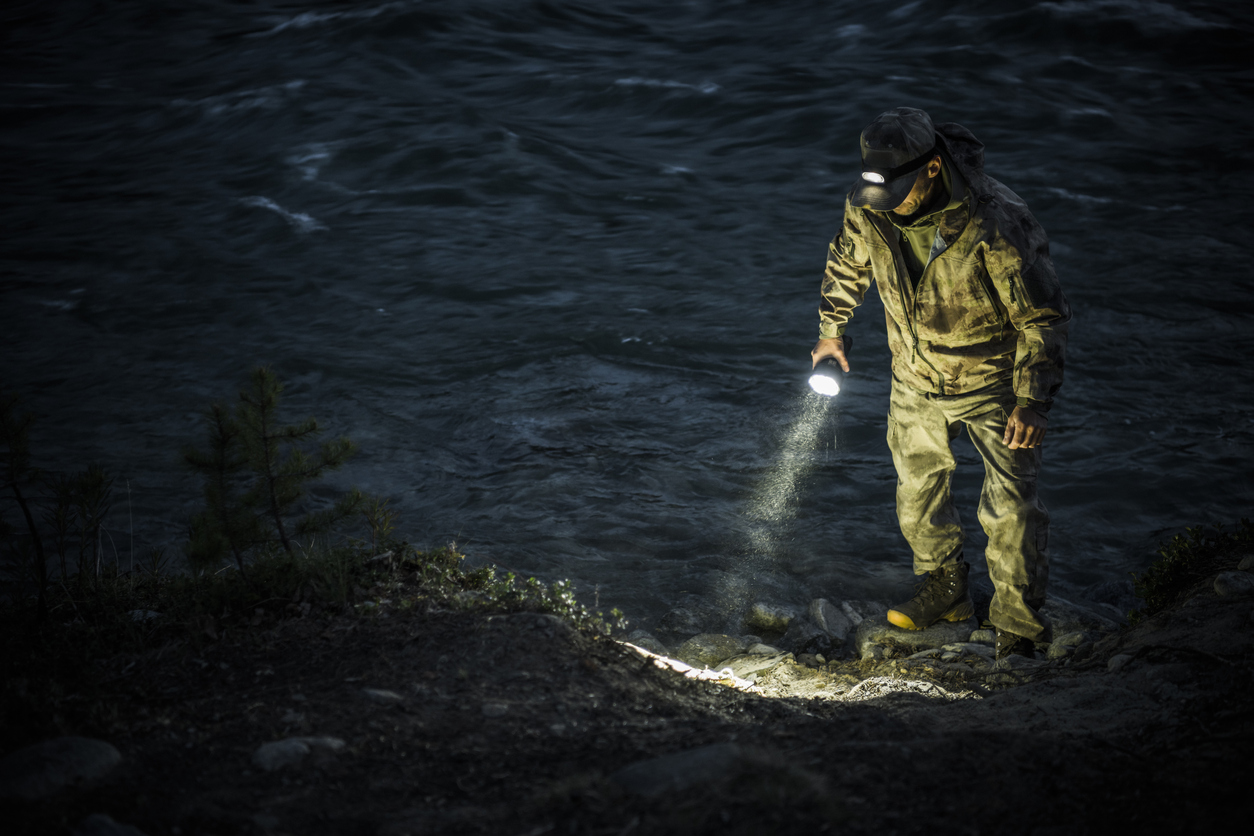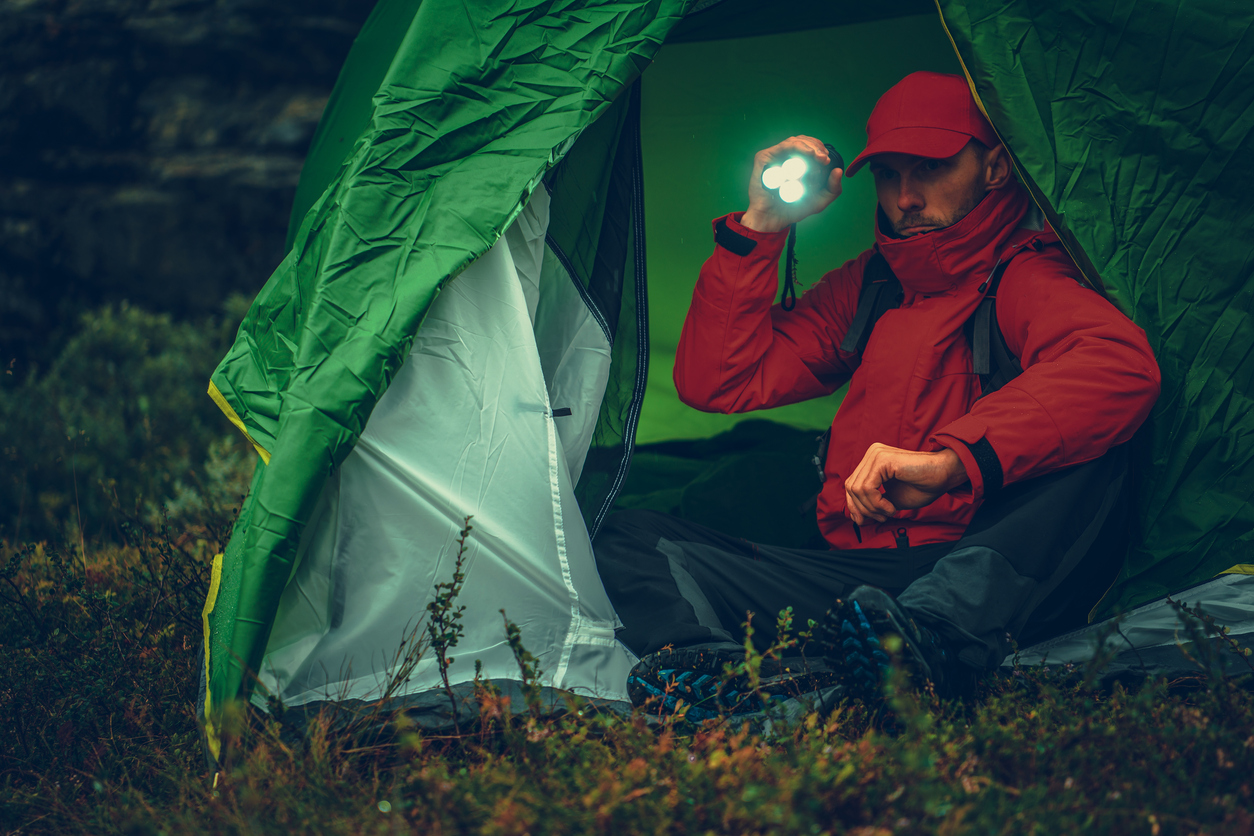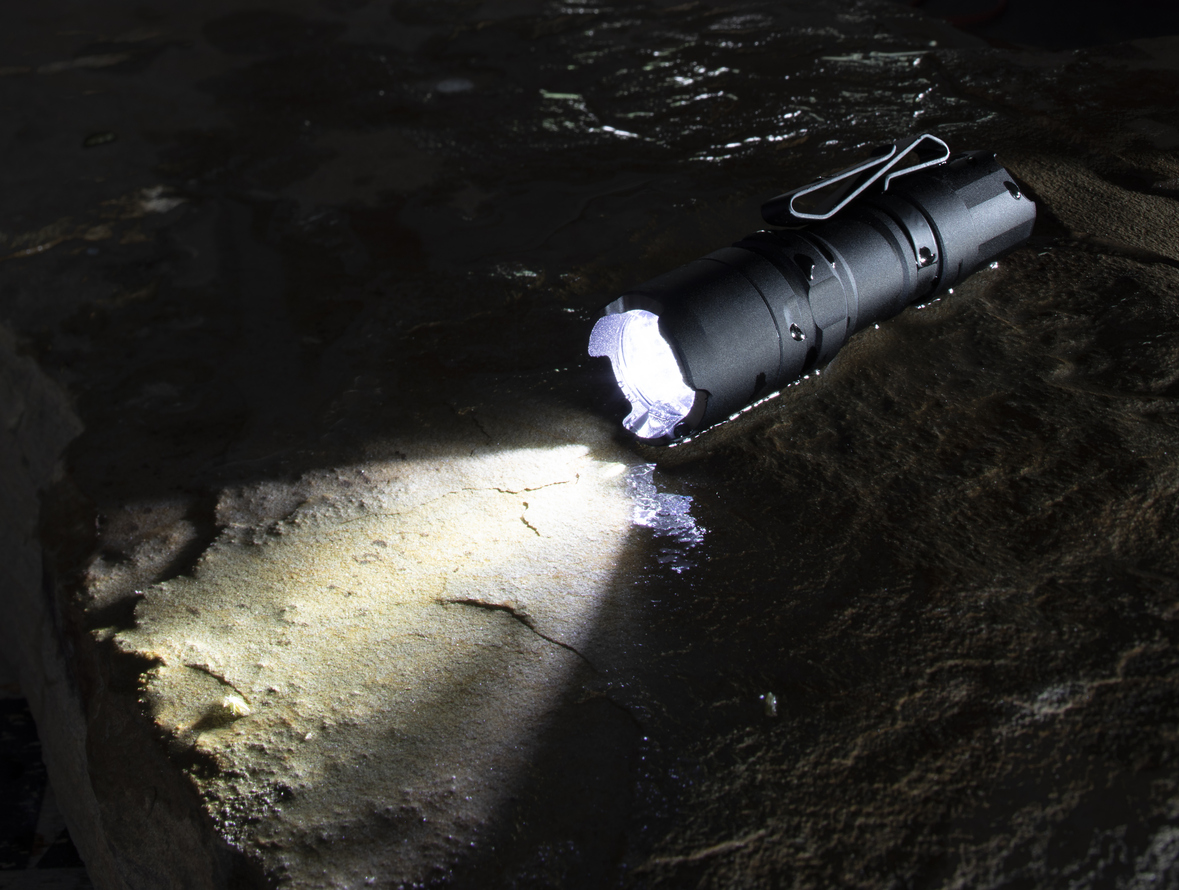While some might argue that the focus on lumens is overblown, you can’t overlook their significance in a disaster survival flashlight. Lumens measure the total amount of visible light emitted by a source, and in the context of survival, having a flashlight that can pierce through the darkness with a bright, wide beam can mean the difference between safety and peril.
However, it’s not just about picking the torch with the highest lumen count; you also need to consider how this impacts battery life, the beam’s reach, and whether the light can be adjusted to suit different scenarios. As you’re weighing your options for the perfect survival flashlight, remember that finding the right balance between brightness and other essential features will equip you better for any unexpected situation.
Now, let’s explore why lumens are a critical factor and how they fit into the broader context of selecting a flashlight that won’t let you down when it matters most.
Key Takeaways
- Lumens directly impact the brightness of a flashlight, making them crucial for effectively surveying surroundings in a survival situation.
- Balancing lumens with specific needs is essential for optimal flashlight use, as higher lumens can deplete the battery quickly.
- The optimal lumen range for survival flashlights is typically between 200-1000 lumens, although specialized tasks may require higher lumen flashlights.
- Water resistance and battery life are additional essential features to consider when choosing a survival flashlight, as they enhance durability and functionality.
Lumens Definition and Importance
Why should you care about lumens when selecting a survival flashlight? Understanding lumens, the light output measurement, is crucial because it directly impacts how brightly your emergency flashlight shines. The lumens definition and importance can’t be overstated; it’s the unit that quantifies the total amount of visible light emitted by a source, such as your trusty flashlight. This measurement is key to finding the brightest flashlights that can illuminate your path in the darkest conditions.
When you’re in a survival situation, the ability to survey your surroundings effectively can make all the difference. That’s where lumens come into play, affecting the beam distance your flashlight can reach. It’s not just about having a rechargeable flashlight that lasts; you need one that can pierce the darkness far and wide.
However, it’s essential to balance lumens with your specific needs. While it’s tempting to go for the highest number, remember that higher lumens can sometimes overwhelm, especially if you’re trying to navigate or find objects up close. Therefore, choosing a flashlight involves considering lumens in relation to how and where you’ll use it, ensuring it’s neither too dim nor excessively bright for your needs.
Optimal Lumen Range for Survival
Having grasped the significance of lumens in a flashlight’s brightness and its potential to light up your surroundings, it’s crucial to pinpoint the optimal lumen range that best suits survival scenarios. You’ll want a disaster survival flashlight that offers enough light without draining the rechargeable battery too quickly. Here’s what you need to know about the lumens you need for the best survival experience:
- Basic Needs (200-1000 Lumens): For most emergency situations, a flashlight within this range suffices. A minimum of 200 lumens ensures you can navigate through darkness, signaling for help, or performing simple tasks. This optimal lumen range for survival balances brightness with battery life.
- Specialized Tasks (1000-3000 Lumens): If your survival situation involves hunting or tactical use, you might need a flashlight that pushes towards the higher end of this spectrum. These provide intense brightness but can consume battery life faster.
- Outdoor Adventures (7000-15000 Lumens): While not typically necessary for survival, these high-lumen flashlights are ideal for camping, hiking, or mountain climbing, offering extensive illumination for any activity.
Lumens Vs. Battery Life
You’ve learned that lumens measure flashlight brightness, but it’s also important to understand how they influence battery life. Higher lumens can quickly deplete your flashlight’s battery, making it essential to find a balance between brightness and longevity. Considering this balance is critical to ensure your survival flashlight performs optimally when you need it most.
Lumens Impact on Duration
Understanding the relationship between lumens and battery life is crucial, as higher lumens can result in a shorter flashlight duration. When you’re mapping out your emergency plan, consider how the brightness of your disaster survival flashlight affects its longevity. It’s not just about having the brightest light; it’s about having light when you really need it.
Here are three key points to remember:
- Balance is Key: Opt for a flashlight that offers a good balance between lumens and battery life to ensure it lasts throughout your emergency.
- Consider Usage: Higher lumens are great for surveying surroundings but drain battery life faster. Adjust based on your situational needs.
- Power Source Matters: Choosing a flashlight with a reliable power source is vital. It should support the duration needed for your safety and survival.
Balancing Brightness and Longevity
When choosing a survival flashlight, it’s crucial to find a sweet spot between brightness and battery life to ensure it’s reliable when you most need it. Balancing brightness and longevity means considering your flashlight’s lumens against its battery type—be it primary or rechargeable. Remember, adequate lumens are essential, but so is a flashlight that won’t die when you’re in the thick of an emergency.
| Feature | Importance |
|---|---|
| Lumens | Essential for visibility in disaster scenarios |
| Battery Type | Influences longevity; rechargeable options may offer more reliability |
| Beam Distance | Critical for navigating and signaling in emergencies |
| Weight & Size | Important for portability and ease of use |
| Waterproof Housing | Ensures functionality in all weather conditions |
Visibility and Beam Distance
Selecting a survival flashlight requires careful consideration of visibility and beam distance to ensure you can see clearly and assess your surroundings effectively. In the context of a disaster, the right level of lumens not only provides the necessary light but also determines how well you can perform basic tasks and navigate through challenging conditions.
Here’s what you need to know:
- Adequate Brightness for Various Tasks: The lumens of your disaster survival flashlight should offer enough lighting to complete essential tasks without overwhelming your vision, especially for close objects.
- Beam Distance Matters: A longer beam distance allows you to assess your surroundings from a safe distance, making it a crucial feature for navigating during emergencies.
- Situational Brightness Considerations: It’s not about having the brightest light; it’s about having the right light for the situation. Too much brightness can impair visibility for nearby objects, while too little can leave you vulnerable in the dark.
In a nutshell, balancing lumens for visibility and beam distance in your disaster survival flashlight ensures you’re well-prepared to face any situation with confidence.
Additional Essential Flashlight Features
After exploring the importance of lumens, let’s shift our focus to other crucial aspects you should consider.
You’ll need to weigh the flashlight’s water resistance and how battery life aligns with your needs. These features are vital for ensuring your flashlight stands up to the elements and remains reliable over time.
Water Resistance Level
In considering a survival flashlight, it’s crucial to look for one with a high IPX rating, ensuring it can withstand water exposure effectively. When you’re preparing your emergency preparedness kit or selecting an EDC flashlight, the water resistance level of your disaster survival flashlight isn’t something to overlook.
Here’s why:
- Outdoor Activities: A high IPX rating means your flashlight can handle rain or accidental submersion, making it perfect for any outdoor adventure.
- Survival Situations: In emergencies, you mightn’t be able to avoid water exposure. A waterproof flashlight ensures reliability when it matters most.
- Versatility: Flashlights with superior water resistance are more versatile and suitable for a variety of environments and conditions, enhancing your survival kit’s overall effectiveness.
Battery Life Considerations
When considering a survival flashlight, it’s vital to assess the battery life to ensure it won’t leave you in the dark during critical moments. Opting for a flashlight with rechargeable batteries or alternative power sources like solar can be a game-changer in a power outage or while enjoying outdoor recreation. Remember, the right choice can turn a potentially dangerous situation into a manageable one.
| Feature | Benefit | Emotion Evoked |
|---|---|---|
| Rechargeable Batteries | Cost-effective, convenient | Security |
| Solar Power | Unlimited energy source | Independence |
| Additional Features | Enhanced utility (e.g., compass) | Preparedness |
Battery life considerations are not just about the lumens or the tactical aspects of a disaster survival flashlight; they’re about ensuring you have a reliable light source when you need it most.
Choosing Your Survival Flashlight
Selecting the right survival flashlight boils down to understanding how lumens affect brightness and its impact on your specific needs. When you’re in the thick of a disaster, you’ll want the brightest flashlight that suits your situation. But brightness isn’t the only factor.
Here’s what to consider:
- Lumens and Use Case: The lumens determine the brightness of your flashlight. For general purposes, a light source with a few hundred lumens might suffice. But for tactical or emergency uses, especially in vast outdoor settings, you might need a disaster survival flashlight boasting 7000-15000 lumens for powerful, far-reaching illumination.
- Size and Portability: Don’t overlook the importance of a flashlight’s weight and size. A bulky tactical flashlight might offer more lumens, but it could be impractical for everyday carry. Strike a balance between brightness and portability to ensure you can carry your light source effortlessly.
- Battery Life and Features: Lastly, consider how long your flashlight can operate before needing a recharge or new batteries. Additional features, like water resistance or multiple light modes, can also be crucial in choosing your survival flashlight.
Conclusion
In summary, lumens are crucial when picking a survival flashlight, offering the brightness needed in dire situations. Aim for a flashlight within the optimal lumen range, balancing powerful light with battery longevity. Remember, visibility and beam distance matter too. Don’t overlook additional features like durability and water resistance.
Ultimately, choosing your survival flashlight means weighing lumens against other essential factors to ensure you’re well-equipped for any emergency. Stay bright, stay safe.




